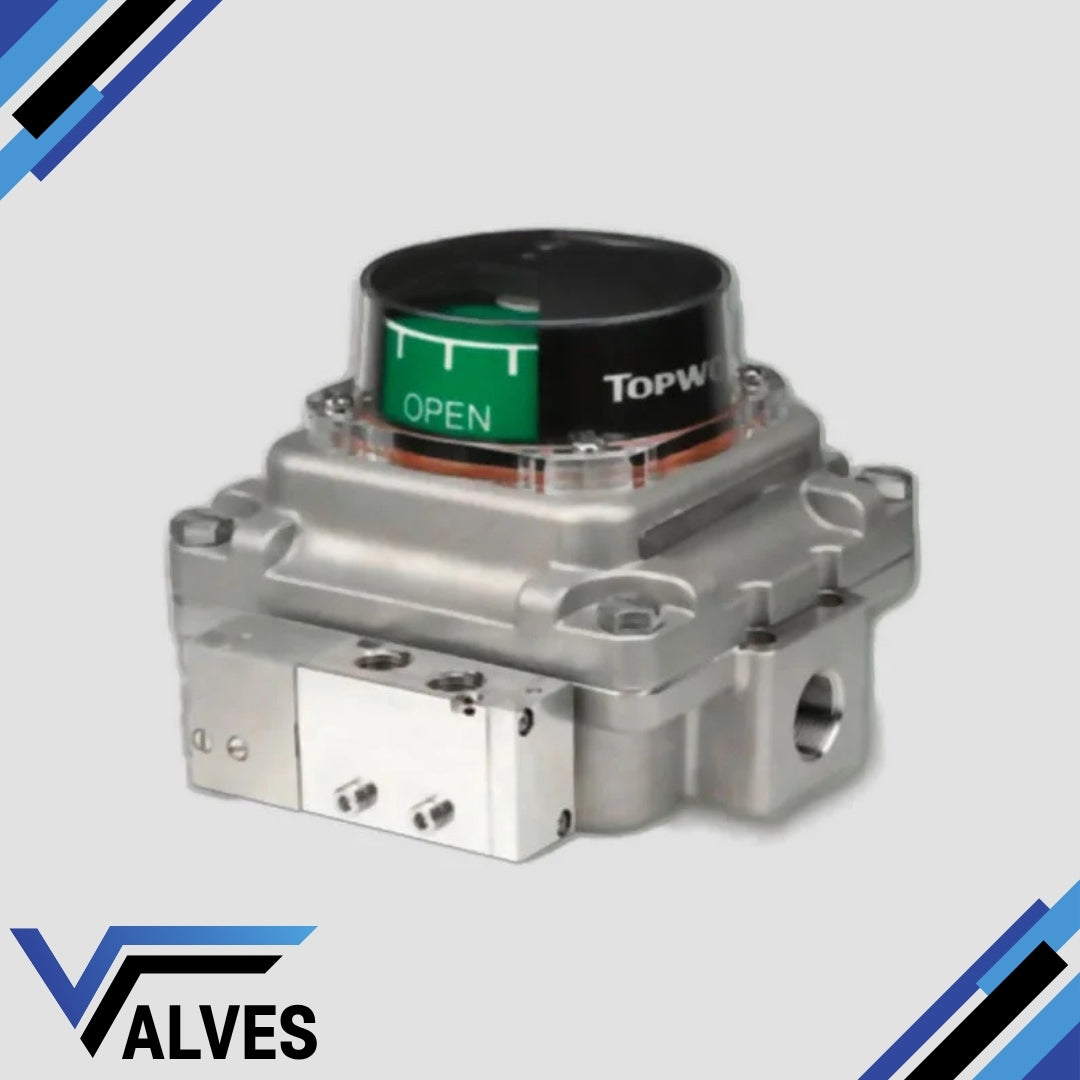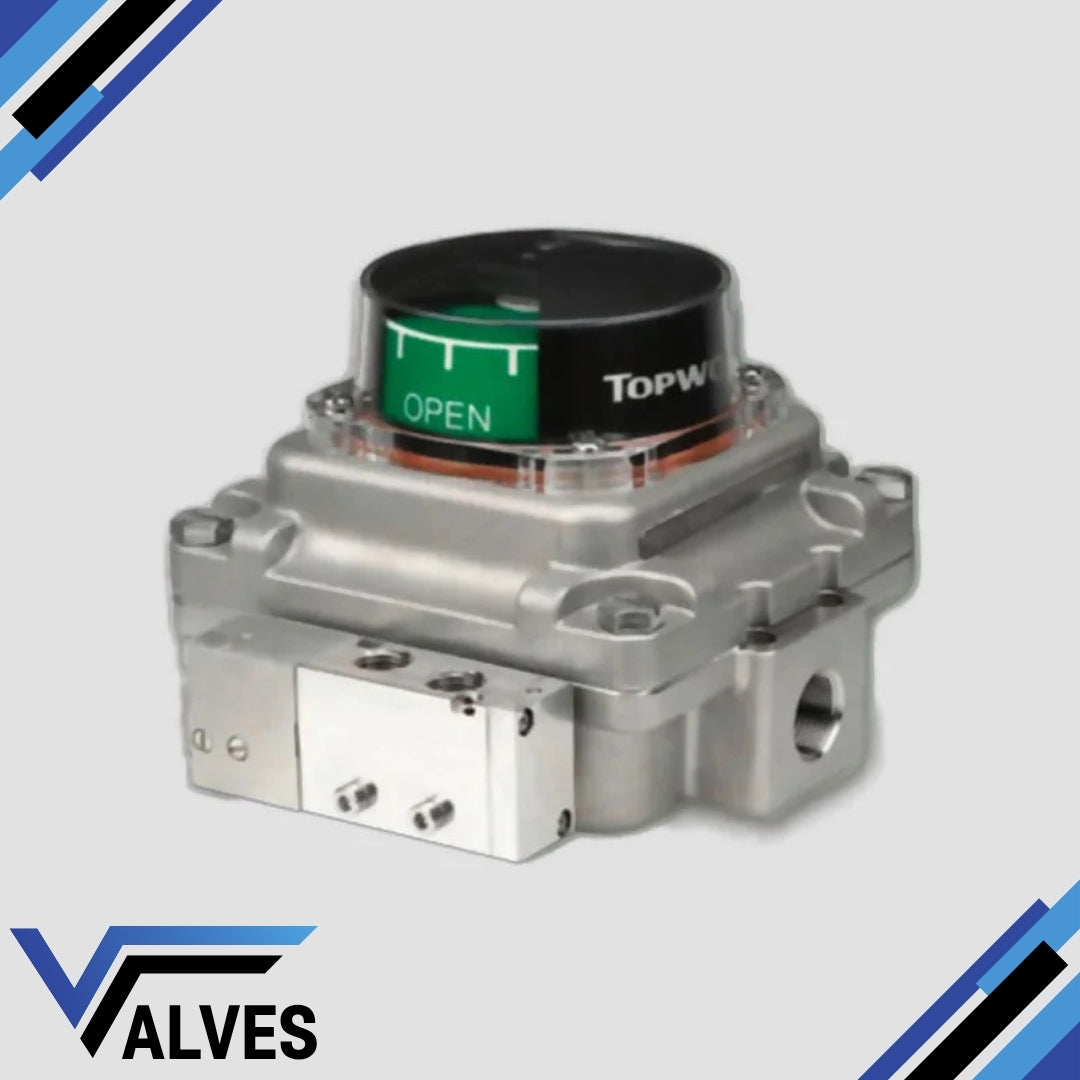Topworx Switchboxes
TopWorx Limit Switch Box TXS-AS1GNMM161 Valve Monitor
TopWorx Limit Switch Box TXS-AS1GNMM161 Valve Monitor
Couldn't load pickup availability
The TopWorx TXS-AS1GNMM161 is a robust and versatile valve monitor designed to provide reliable performance in some of the most demanding industrial environments. Part of the TX Series, this model is engineered for extreme conditions, offering precision in valve monitoring for critical applications. Its compact design allows for easy installation on a variety of valve types, and it is certified for use in hazardous locations, ensuring compliance with global standards.
Key Features:
- Durable Construction: Built with a tough enclosure that can withstand extreme environments, the TXS-AS1GNMM161 features IP66/67 ingress protection, ensuring resistance to dust and water.
- Switching Options: Comes equipped with GO™ Switch technology, providing hermetically sealed, dry contact switches for high durability and low power consumption.
- Global Certifications: Certified for hazardous area use, including ATEX, IECEx, and SIL safety certifications, making it suitable for use in explosive atmospheres.
- Field Flexibility: This model supports various communication protocols, including AS-Interface, enabling integration into complex automated systems.
- Easy Installation and Maintenance: The compact size and pre-calibrated switches allow for straightforward installation and minimal maintenance, reducing operational downtime.
Additional Information
The TopWorx TXS-AS1GNMM161 is an ideal solution for operations requiring precise valve position feedback in critical areas such as oil & gas, chemical processing, and power generation. The valve monitor offers various customization options, including different types of switches (e.g., mechanical or inductive), enabling tailored configurations based on specific application needs. Its rugged design and intrinsic safety features make it a highly dependable choice for both general-purpose and hazardous environments.
Share

FAQ's
What is the difference between a valve and an actuator?
What types of actuators are available?
The main types of actuators are:
Pneumatic actuators – use compressed air for fast, reliable operation.
Electric actuators – use electrical power for precise control.
Hydraulic actuators – use fluid pressure for high-torque applications.
Each type offers unique advantages depending on the environment, media, and system control needs.
How do I choose the right actuator for my valve?
To select the correct actuator, consider:
Valve type and torque requirement
Power source available (air, electric, or hydraulic)
Operating environment (temperature, humidity, hazardous area)
Control signal type (on/off or modulating)
Matching actuator torque and compatibility with the valve’s ISO mounting ensures reliable performance.
What are the main types of valves used in automation?
The most common valves in automated systems include:
Ball valves – for tight shutoff and quick operation.
Butterfly valves – for larger flow control with compact design.
Globe valves – for precise throttling and flow regulation.
Check valves – to prevent backflow.
Gate valves – for full bore flow isolation.
What’s the difference between a double-acting and spring-return actuator?
Double-acting actuators use air (or power) to both open and close the valve.
Spring-return actuators use air to open (or close) the valve, and a built-in spring to automatically return it to a safe position when power or air is lost — ideal for fail-safe operation.
How often should valves and actuators be serviced?
Regular maintenance intervals depend on operating conditions, but a good rule of thumb is to inspect every 6–12 months.
This includes checking for leaks, lubrication, seal wear, and actuator responsiveness to prevent unexpected downtime.

